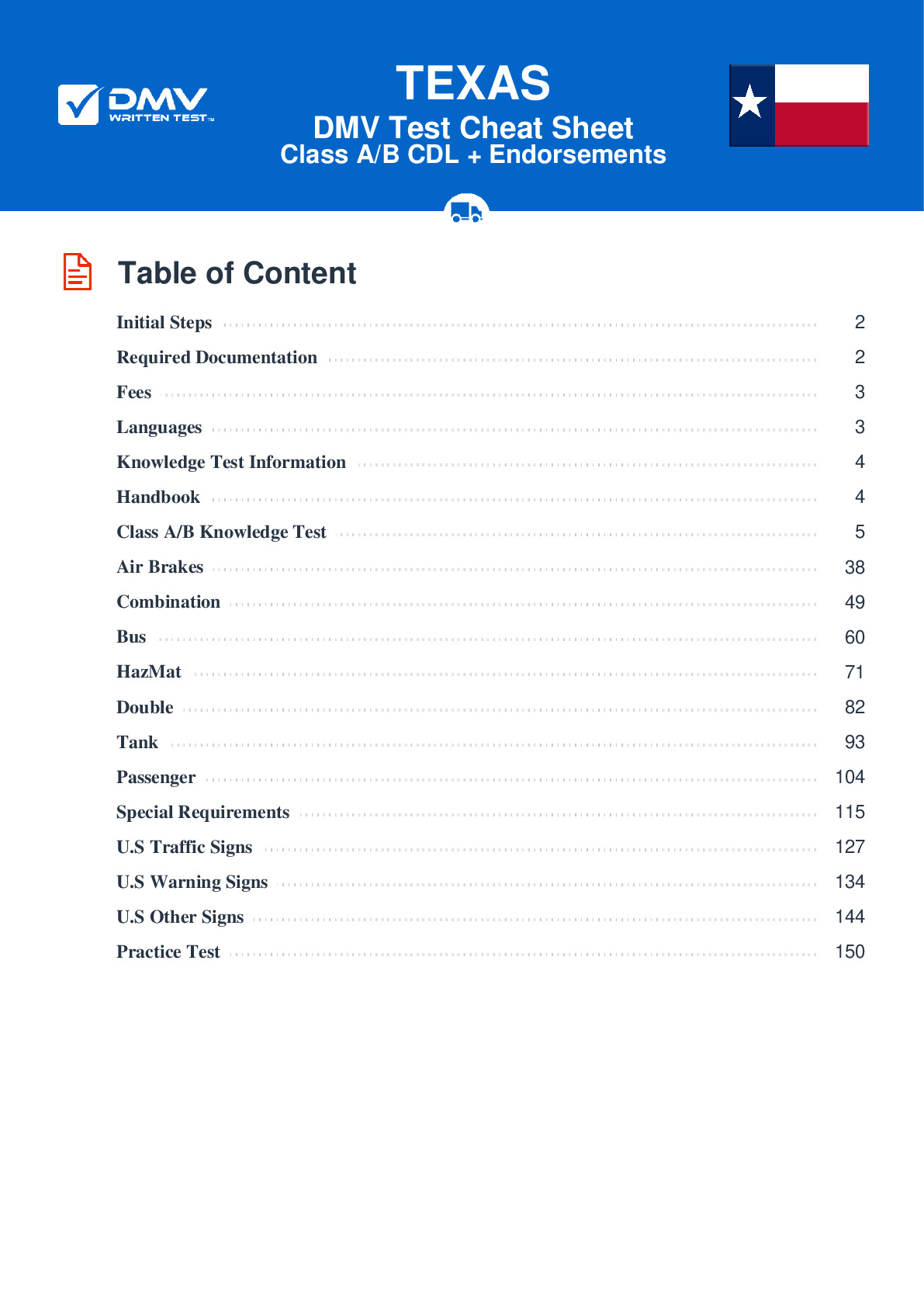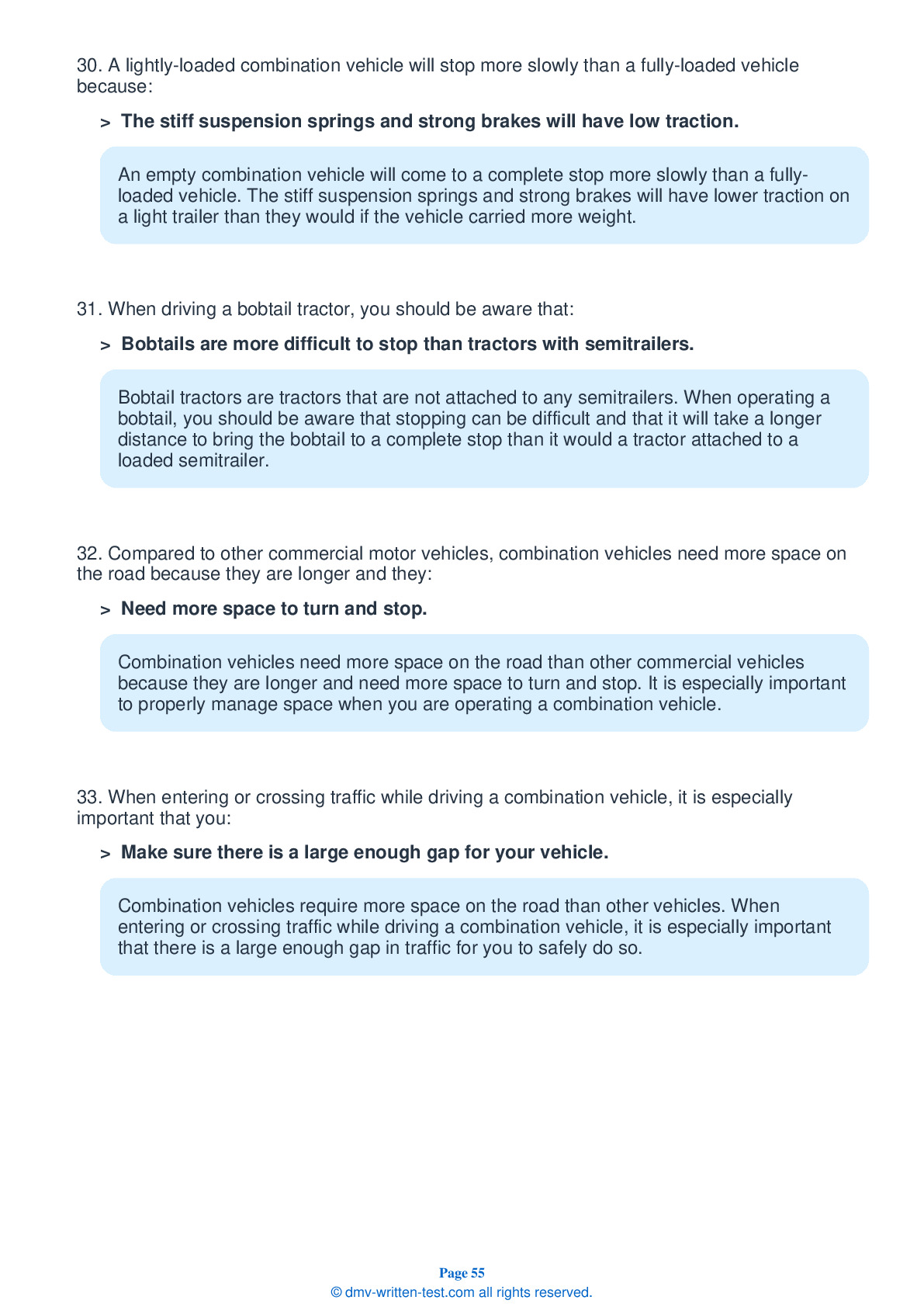Combination
All applicants who are applying for a Class A CDL should be prepared to take the Combination test. This test covers information found in Section 6 of the Texas Commercial Motor Vehicle Drivers Handbook. Section 6 provides the information needed to safely operate tractor-trailers, doubles, triples, and straight trucks with trailers. The test is made up of 20 multiple-choice questions, and applicants will need to correctly answer a minimum of 16 questions to pass. The Combination test is not a replacement for the Double/Triple endorsement test.
Number of Question
Passing Score
1. What is a tractor protection valve?
Explanation
In a combination vehicle with air brakes, the tractor protection valve keeps air in the tractor or truck brake system in the event of the trailer breaking away or developing a leak.
2. To help prevent rollovers, you should:
Explanation
To lower the risk of a rollover, load your cargo as closely to the ground as possible. To further reduce this risk, take curves and corners slowly.
3. When coupling a trailer:
Explanation
When coupling, make sure you couple matching glad hands. They are often color-coded to help drivers avoid mistakes. Typically, blue is used for service lines and red is used for emergency lines.
4. Rollovers happen when:
Explanation
Rollovers happen when a vehicle is driven too fast. To reduce the risk of rollover, make sure the weight of cargo is loaded low to the ground, and that you take turns and curves slowly.
5. The service air line is attached to the:
Explanation
The service air line carries air and is controlled by either the foot brake or trailer hand brake. The service air line is attached to relay valves, which allow the trailer brakes to be applied quickly.
6. When driving a bobtail tractor, you should be aware that:
Explanation
Bobtail tractors are tractors that are not attached to any semitrailers. When operating a bobtail, you should be aware that stopping can be difficult and that it will take a longer distance to bring the bobtail to a complete stop than it would a tractor attached to a loaded semitrailer.
7. Large combination vehicles take the longest amount of time to stop:
Explanation




